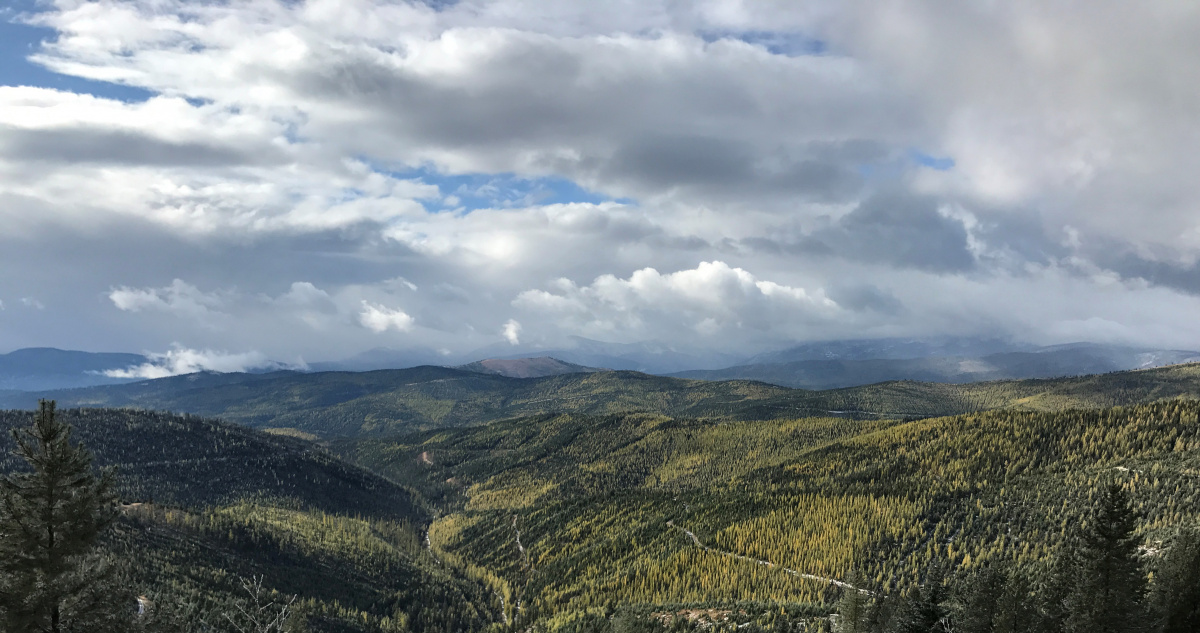BLM Montana expands public access in Lower Blackfoot River Watershed
Organization:
Media Contact:

the Lower Blackfoot River watershed thanks to the BLM’s
Belmont Creek acquisition.
(MISSOULA, Mont.) – The Bureau of Land Management’s Missoula Field Office today expanded public access by acquiring 7,268 acres of land. Using Sportsman’s Access funds from the Land and Water Conservation Fund, the acquisition is helping stitch together what had been a patchwork of interspersed public and private land.
The Belmont Creek acquisition, located 25 miles northeast of Missoula, is the first of several additions to public lands within the Lower Blackfoot River watershed which will take place over the coming months and years.
The acquisition is the result of a collaborative effort by the BLM aimed at securing access in the Blackfoot River Corridor on former timber land. The goal is to maintain working lands with continued grazing, as well as active forestry and fire-management projects that would reduce the threat of catastrophic wildfires and improve the health of the forest. The area also offers high-quality hunting and fishing access and close-to-home recreation opportunities right in Missoula’s backyard.
“The BLM, under Secretary Bernhardt’s leadership, is working on multiple fronts to expand access to public lands for all Americans, and to increase opportunities for hunting, fishing and other outdoor recreation on the more than 245 million acres we manage,” said BLM Deputy Director for Programs and Policy William Perry Pendley. “This important acquisition embodies our commitment, and we’re proud to work with local landowners and sportsmen’s groups to continue to enhance public holdings in the Blackfoot River watershed.”
The BLM has participated in collaborative stakeholder discussions about this potential acquisition for several years, collecting information and insight from public land users, state land management agencies, county officials, and local landowners regarding acquisition opportunities in the area.
“We are deeply grateful for the rigorous and open public process that involved many stakeholders to determine who best to manage these lands,” said Missoula Field Manager Joe Ashor. “We truly appreciate the overwhelming support we received from local landowners and sportsmen’s groups as well as key partners and look forward to managing these lands for a variety of benefits and opportunities such as hunting and fishing, grazing, and active forestry and fire management projects that will improve the health of the forest.”
The land had been traditionally open to the public, but there was no guarantee that access would continue. By consolidating it with the adjacent public land, access for the public is secure and the outstanding recreational values of the land itself continue to be available to the public.
Much of this land had been part of a checkerboard pattern of public and private land that dates back to 1862. At that time, Congress gave the two main railway companies every other 1-mile section of land within a 10-40-mile corridor along their railroads. Eventually, most of the railroad land ended up under the ownership of a series of private timber companies.
Acquisition of these three parcels accords with Secretary’s Order (SO) 3373, Evaluating Public Access in BLM Public Land Disposals and Exchanges, which directs that recreation opportunities for all Americans be ensured by continued access to public land and waters that are managed by the Department. Acquiring these parcels that are adjacent to the SRMA and which were privately-owned, is also consistent with SO 3366, Increasing Recreation Opportunities on Lands and Waters Managed by the U.S. Department of the Interior.
The BLM manages about 245 million acres of public land located primarily in 12 western states, including Alaska, on behalf of the American people. The BLM also administers 700 million acres of sub-surface mineral estate throughout the nation. Our mission is to sustain the health, diversity, and productivity of America’s public lands for the use and enjoyment of present and future generations.
